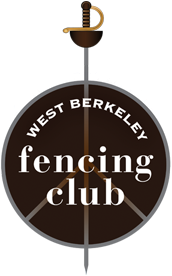About Fencing
MODERN FENCING
Modern fencing requires highly developed mental as well as physical skills. Though it originated in the deadly dueling grounds of Medieval Europe, it has evolved from those grim origins into a popular Olympic sport. The modern fencing “strip” is a replication of the traditional dueling ground.
Fencing moved into the current “electrical” era in the 1950s, and since that time has continued to develop into an ever faster and more physical sport, much as tennis has done in recent decades.
Fencers wear protective jackets, masks and gloves, and can choose from three different practice swords, all with unique characteristics and rules.
The West Berkeley Fencing Club encourages all three forms of modern sport fencing but focuses on foil, especially for newcomers to the sport.
Visitors are welcome to come by and watch during fencing hours and learn more about a sport that many have found to be a life long passion.
FENCING WEAPONS
Foil
The foundational fencing weapon, foil is the most common form of fencing and the recommended way to be introduced to the sport. In foil, only the point is used to score touches and the target is restricted to the torso and groin. Foil has rules to simulate the logical flow of a fight called “right of way,” as does sabre.
Sabre
A derivative of the curved cavalry sword, sabre has rules similar to foil but allows for more target area and uses the blade’s edge as well as the point as means of scoring a touch. The target is restricted to the arms, torso, and head.
Épée
A heavier weapon that scores only with the point (like foil) and has the look and feel of a 19th century dueling sword. The sport of épée has far fewer rules than foil or sabre and allows the entire body as target area.
All three forms of fencing offer unique challenges and fun. A serious fencer should have at least a base proficiency in all three weapons. Starting with foil is an ideal way to develop basic skills and a perspective as to which form of fencing may be the most attractive to an individual.



